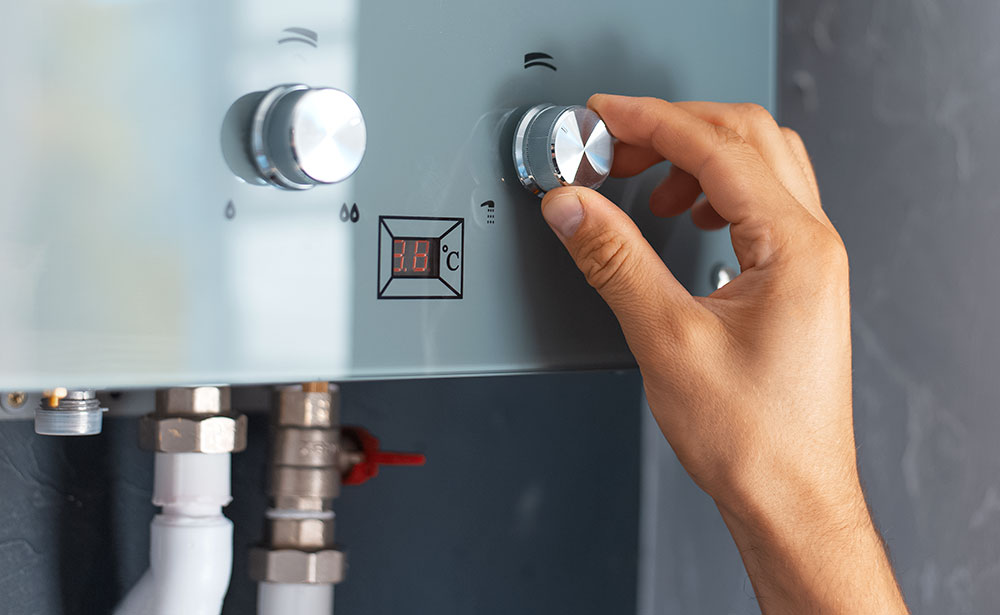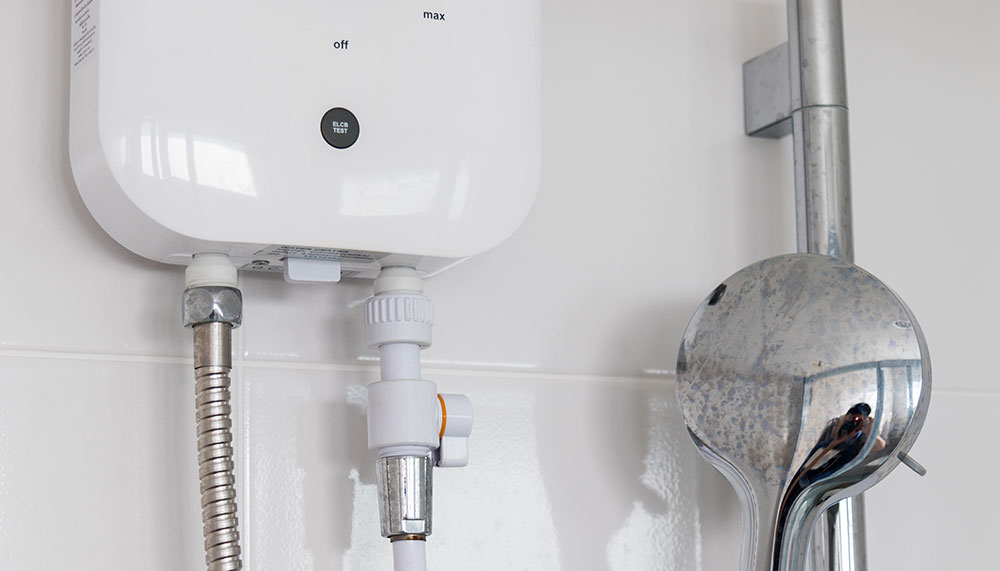Water Heater

The water heater is an important device for regulating the water temperature in the home. Although usually reliable and trouble-free, regular water heater maintenance and inspections are the best way to avoid unnecessary breakdowns (and unnecessary cold showers) and extend the water heater’s life. Read some useful tips on how to maintain your water heater.
1. Check the pressure relief valve
The water heater’s pressure relief valve is an important part of safety equipment and should be disconnected during the water heater’s daily maintenance. As the water temperature rises, so does the pressure in the water tank. The pressure is automatically released through the valve. Without this safety function, too much pressure can build up in the water heater’s water tank, ultimately leading to breakage. To avoid this hazard, check the pressure valve every six months and follow these simple steps:
- Turn off the power supply and the inlet valve.
- Place the bucket under the pressure release valve.
- Manually open the valve to allow water to drain.
- Release the valve.
When the push button is closed, it should work normally. If it doesn’t or leaks, it’s time to call a professional for a replacement.
2. Flush the water heater
Over time, sediment will settle down at the water heater tank bottom. This could be dirt in your well or water pipe, or it could be calcium carbonate. Hot water converts the minerals in tap water to solid form, settling and building up at the tank bottom over time.
These build-ups can damage your water heater. The sediment layer can act as an insulating layer between the heating unit and the water, making your machine work harder and take longer to raise the water temperature. Debris can also add harmful corrosives to the water and damage equipment, leading to inadvertent repairs. Draining the water annually will help prevent these problems. Flushing the water tank is a relatively simple maintenance task for the water heater:
- Close the inlet valve and turn off the electric heater. For water heaters operated with natural gas, please lower the temperature to “vacation mode.”
- Connect the hose to the drain valve and place the other end of the hose outside or in a large bathtub or bucket. Be careful – the drained water will get very hot.
- Open the drain valve and the pressure relief valve to drain all water. The water can be polluted by accumulated sediment. If you see rusty flakes, it must be a sign of corrosion in the water heater, and it may be time for a replacement.
- When the water tank is empty, turn the water supply back on for a few seconds to flush the water tank with clean water. You may need to do this a few times before the water drains, which indicates that the water tank has been properly rinsed.
- When finished, close the drain valve and the pressure relief valve and open the water supply device to refill the water tank.
Make sure the water heater is set to no more than 120 degrees. Too much hot water accelerates the build-up of deposits and, of course, increases burnout risk.
3. Check the anode rod
When servicing the water heater, make sure you check the anode rod. The enamel coating in the water heater prevents the steel water heater from rusting. However, after years of heating with hot water, an environment is created in which corrosives and bacteria thrive and wear tooth enamel. The anode rod is a tube made of aluminum, magnesium, or zinc that can absorb corrosive water elements. The acidic agent does not “attack” the tooth enamel, but rather corrodes the anode rod.
Eventually, the anode rod will degrade, so it is very essential to inspect it every three years. If you use a water softener, you may need to check the anode bars more often. Please consult your user manual. To check the anode rod on the water heater:
- Turn off the power and water inlet. If you have a natural gas system, lower the temperature to “vacation mode.”
- Connect the hose and drain approximately 5 gallons of water from the water tank.
- Follow your model’s instructions to remove and inspect the anode rod. On most water heaters, you’ll see a hexagonal club head protruding from the top.
If the corrosion is severe or your pipeline is completely covered in minerals, it’s time to replace it. Fortunately, the cost of these pipelines is not high. If the ceiling gap is small, get a foldable anode rod. - Adjust the temperature setting
In general, the water heater temperature should be set to 120 degrees Fahrenheit. The steps for setting the water heater differ depending on the kind of water heater. Please refer to your user manual for instructions.
For gas water heaters, setting the temperature is generally as easy as turning the temperature knob. Maintaining electric water heaters can be a little trickier. You may need to open a control panel to access two different thermostats. You may need a flat-bladed screwdriver to adjust the temperature. Insert a screwdriver into the adjustment knob and turn it to set the temperature. - Insulate storage tanks and pipes
This water heater repair technique is mainly applicable to old water heaters. Newer water heaters are usually insulated (check the manual to make sure it is correct). If you’re using an older water heater, you can reduce the workload by insulating the tank and pipes to minimize heat loss. Fiberglass jackets suitable for placement around the water heater can be found online and at hardware stores. - Use vacation mode
Vacation mode is a setting on most gas water heaters that can heat the water to a level where it will not freeze. If you leave the house for a long time, please do not forget to put the water heater in vacation mode. If no one uses hot water, the water heater does not need to be at full capacity.
Tankless water heater
Compared to traditional cousins, tankless water heaters can save a lot of energy. Traditional water heaters have to constantly heat the water in the water tank to ensure that hot water is available when needed. Models without a water tank can provide hot water if required.
Tankless water heaters are usually more expensive to buy and install than traditional versions. However, long-term savings can make the initial investment a wise choice. Based on your daily water consumption, the EPA estimates that tankless water heaters are 34% more efficient than storage water heaters. Heating and warming water requires less energy, which translates into lower energy costs.
The service life of tankless water heaters is also longer than that of conventional water heaters. The water heater’s life span is more than 20 years, and the typical life of the water heater is 10-15 years.
Tankless water heater fuel options include electricity, natural gas, and propane. A good plumbing contractor can help you calculate potential savings and payback times and recommend the best one for your house.
